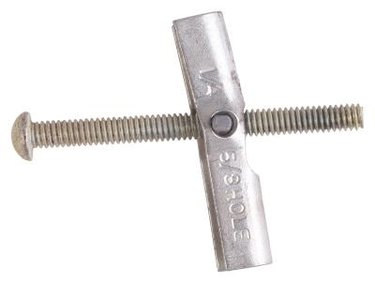
American bolts are designed in United States customary system units like inches. Yet the majority of the international market is defined by metric units like millimeters. American standards organizations have adapted by issuing standards for both American and metric units. Differences in unit usage have created separate bolt designation systems and different hardware dimensions.
Standards
Video of the Day
American National Standards Institute standards are expressed in United States customary units such as inches and torque-pounds. ANSI standard family B18 is set aside for fasteners such as bolts. However, ANSI has also issued standards for metric units. ANSI metric standards use the ANSI standard name and add an M for metric to the end. B18.3.5 is the standard for hexagon bolts. B18.3.5M is the standard for metric hexagon bolts. ANSI bolt standards have been adopted by the American Society of Mechanical Engineers. ANSI B18.3.5 can be referenced as ASME B18.3.5. International Standards Organization standards are all given in metric units, even if they apply to American products. B18.3.5 bolts range in diameter from 1/4 inch to 3/4 inch. B18.3.5M bolts range from 3 mm to 10 mm in bolt diameter across the threads.
Video of the Day
Fastener Size Designation
Thread pitch describes the dimension between bolt threads. Nominal diameter is the diameter of the screw threads. Metric fastener size designations start with capital M or MJ. This is followed by the bolt's nominal diameter and the thread pitch. The diameter and thread pitch are given in millimeters. M 10 x 1.5 is a metric bolt with a 10 mm nominal diameter and 1.5 mm pitch. The standard American bolt is defined by the inch system designation. The bolt is identified by its diameter in inches, the pitch or number of threads per inch, the thread series designation, and the bolt length. Thread series designations can be united fine coarse or united national fine. A 1/2 - 24 UNF bolt is an American standard bolt 1/2-inch in nominal diameter, 24 threads per inch, with a united national fine thread. For both metric and standard bolts, the head size is the distance across the flats. For standard bolts, the head size is measured in inches or fractions of an inch. For metric bolts, head size is measured in millimeters. However, metric bolt head size is measured in millimeters. ANSI B1.13M, also identified as ASME B1.13M, defines the standard for metric screw threads in American units with metric units in parenthesis.
Threads
Thread pitch describes the dimension between bolt threads. For standard bolts, the pitch is the number of threads per inch. For metric threads, the pitch number is the distance between threads. According to "High Performance Fasteners & Plumbing" by Mike Mavrigian, "metric pitch numbers graduate opposite those of fractional pitch numbers."
Protective Coatings
When a protective coating is used on bolts, it can be identified at the end of the fastener designation. The American Society for Testing and Materials has issued standards for coatings used on fasteners like bolts. Society standards for coatings on fasteners include an M after the standard number. F1136-10 is the standard specification for zinc/aluminum corrosion protective coatings for fasteners. F116M-10 is the metric version of the standard specification for zinc/aluminum corrosion protective coatings for fasteners. F1941-07 is the specification for electro-deposited coatings on threaded fasteners, while F1941M-07 provides the same specifications for metric fasteners such as bolts.